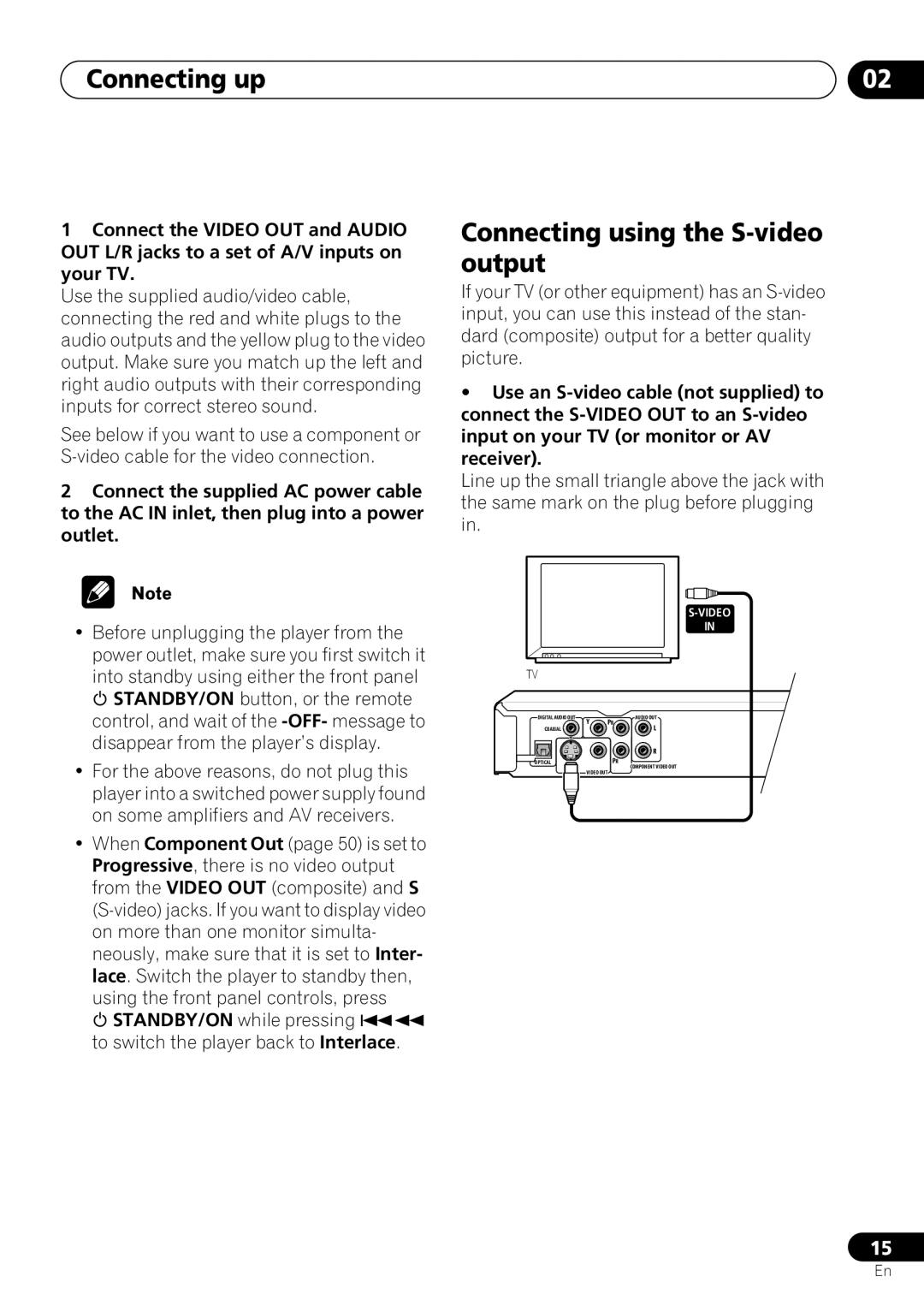
Connecting up
1Connect the VIDEO OUT and AUDIO OUT L/R jacks to a set of A/V inputs on your TV.
Use the supplied audio/video cable, connecting the red and white plugs to the audio outputs and the yellow plug to the video output. Make sure you match up the left and right audio outputs with their corresponding inputs for correct stereo sound.
See below if you want to use a component or
2Connect the supplied AC power cable to the AC IN inlet, then plug into a power outlet.
•Before unplugging the player from the power outlet, make sure you first switch it into standby using either the front panel
STANDBY/ON button, or the remote control, and wait of the
•For the above reasons, do not plug this player into a switched power supply found on some amplifiers and AV receivers.
•When Component Out (page 50) is set to Progressive, there is no video output from the VIDEO OUT (composite) and S
STANDBY/ON while pressing
to switch the player back to Interlace.
02
Connecting using the S-video output
If your TV (or other equipment) has an
•Use an
Line up the small triangle above the jack with the same mark on the plug before plugging in.
IN
TV
DIGITAL AUDIO OUT | AUDIO OUT |
Y | PB |
COAXIAL | L |
| R |
OPTICAL | PR |
S | COMPONENT VIDEO OUT |
VIDEO OUT |
|
15
En
